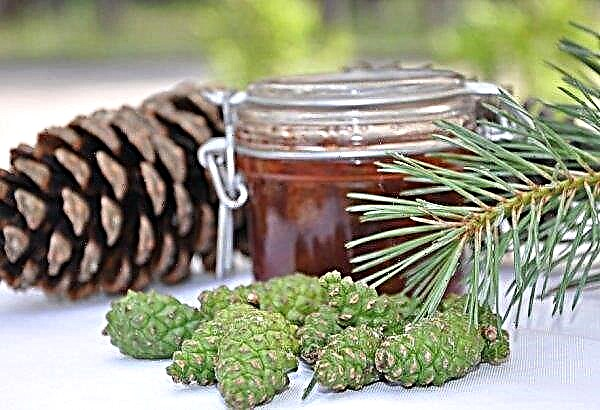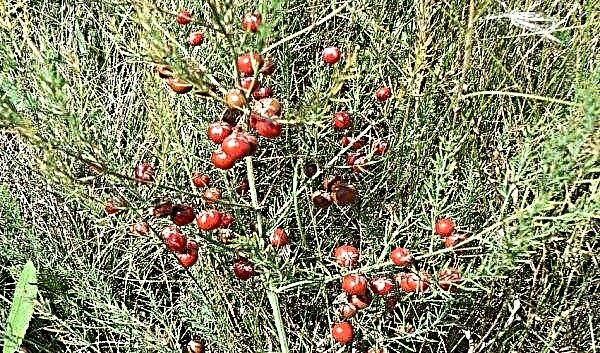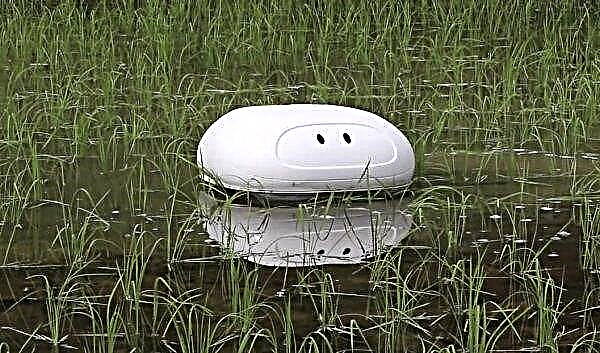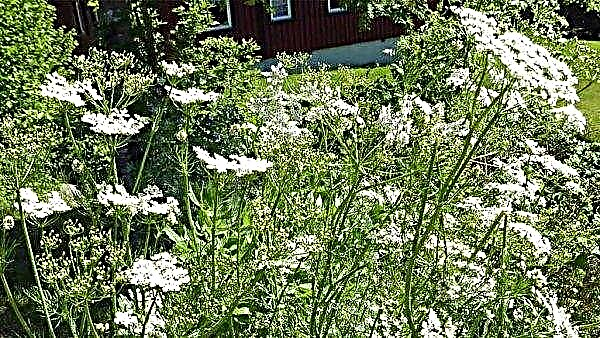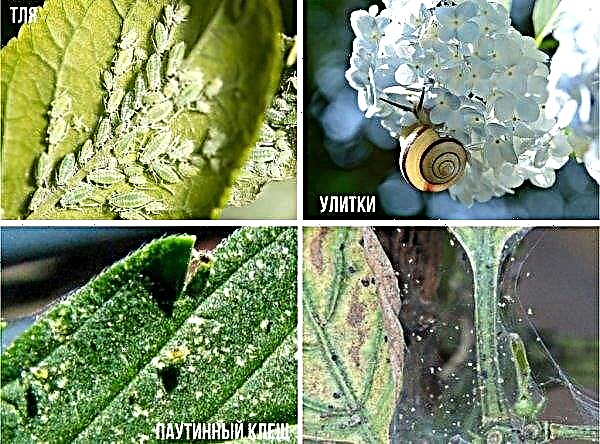Epiphyllum is a cactus, which in modern conditions, many gardeners grow on their windowsill. It is not too whimsical to care for, and its flowering will definitely please the eyes of residents and guests. Before you get it, you need to know what lighting, temperature and humidity should be maintained in the room, how to water, fertilize, trim, transplant and propagate the plant.
Botanical description of the plant
Epiphyllum is a phyllocactus that is common in Mexico and along the coast of America. Since it belongs to the Cactus family, its surface is covered with thorns. They grow shrubs, and their base is lignified (while the stem is leafy and fleshy). Cactus has oval-shaped flowers with a long flower tube. The period of their flowering falls on April – June.
A flower can be of almost any color (for example, yellow, red, white, pink and others - except blue). Its size is very impressive, and the buds consist of pointed petals arranged in tiers. One corolla is able to reach a length of 40 cm, and its diameter reaches 8–16 cm. Usually, flowers begin to emit a pleasant smell and bloom at night, but some of them do this during the day.
Important! Do not rush to take the fruit with your hands, as it is covered with yellow-green or red spines. It is quite edible, and its flesh has a strawberry-pineapple sweet taste.
This plant is able to bear fruit, however, for this it is necessary to ensure cross pollination. They are quite large in size and visually resemble a plum. Their pink thin skin hides juicy flesh and several black seeds up to 2 mm long.
The main characteristics of the epiphyllum are collected in the table:
| Root system | Underdeveloped |
| Stem | Long, fleshy |
| Leaf shape | Oval |
| Leaf color | Dark green |
| Flower shape | Rounded |
| Flower color | White, yellow, red, pink, etc. |
| Fruit shape | Oval |
| Fruit color | Pink |
| The taste of fruit | Strawberry and pineapple |
Main types
The genus Epiphyllum has more than 20 species. Here are some of them:
- Ackerman. Has red flowers located on thin peduncles. Usually it is grown by hanging in a cache-pot.

- Guatemalan. There are 2 of its varieties, which differ from each other in the shape of the stems. Leaves - 5 cm in length.

- Just pru. Easily adapts to the environment and prefers a temperature of +18 ° C. With pink flowers. Propagated by cuttings.

- Jagged. This species has no needles. It has several hybrids that differ in shades. It blooms at night.

- Lau. It features dynamic growth and development. On its entire surface are yellow-brown needles.

- Oxypetalum. It has the appearance of a bush and reaches an impressive size. The diameter of its flowers is 18 cm.

- Pointed. Otherwise, this species is called "white" because of the color of its flowers. It is preferable to grow it in a cache-pot.

- Thomas. Its stems can reach 4 m in length, but at home they grow only up to 70 cm. In its shape it resembles a bush with white flowers.

- Angular. The shape of its stems is zigzag, which justifies its name. Primary stems have a rounded shape and are capable of lignification, while secondary stems are flat, can reach up to 1 m in length.

- Philanthus. It begins flowering in the middle of summer. Able to produce single pink buds.

- Hooker. It has rigid stems and grows to an impressive size. With white flowers with pointed petals.

What conditions do you need to create at home
Even a novice gardener, this cactus will not cause much difficulty during the care. Once it adapts to new conditions of detention, take care of lighting, ventilation, temperature and humidity.
Lighting
Both in winter and in summer, the flower needs bright diffused lighting, however, direct sunlight should not be allowed to enter. So, as a place for it, it is better to choose a windowsill located on the east or west side of your home.
Did you know? Since cactus needles ionize the air well, it is able to block the effects of electromagnetic radiation coming from electrical appliances, so it’s good to put it near a computer.
The northern part of the room is categorically not suitable, because it provokes extremely poor flowering. During flowering, it is better not to turn the plant in the direction of bright light, because it can lose all its buds.
Ventilation
Since ventilation can not only lower the temperature in the room, but also fill it with fresh air, which is very necessary for the epiphyllum. This procedure must be carried out at least once a day for 20-30 minutes. The plant can be moved from the window to another location. Avoid drafts, because their appearance can cause mold to spread on the leaves.
Temperature mode
The plant is able to tolerate temperatures up to +35 ° C, but in the spring and summer, + 20 ... + 25 ° C is enough for it. In winter, the optimum mode will be + 12 ... + 15 ° C. The most acceptable for the plant will be + 24 ... + 25 ° C.
Air humidity
Although the plant tolerates dry air well, it still needs watering and spraying, high humidity in the room (more than 50%). In winter, you can stop these manipulations and keep it in a calm environment that does not include water procedures.
How to care at home
Although Epiphyllum is not whimsical to care for, with the rules of watering, fertilizing and replanting plants, you need to familiarize yourself in advance. This also applies to the crown trimming process.
Watering
Since the area of this plant is located in the tropics, where humidity is increased due to frequent rains, growing it at home, it should be provided with abundant watering. So, in the summer it is necessary to do this 1-2 times a week, and in the winter - 1 time per month.
Important! It is not necessary to spray the flowers themselves, as this can provoke decay. In spring, this procedure is better not to perform generally.
In extreme heat, stalks can be sprayed. Water should be pre-settled or rain, and its temperature should be at room temperature. For the procedure, use such an irrigation method in which water will not fall onto the stems (just under the root, the irrigation method is drip). You can also arrange the flow of water through the pan.
Fertilizer application
In order for the plant to grow well and dynamically, it should be fertilized. This procedure is best carried out in the spring and summer, since it is during this period that it blooms profusely. You will need liquid fertilizers (Planton Cat, Master), specially designed for succulents (plants that have special fabrics for reserve water) and cacti.
Such fertilizers contain potassium and phosphorus necessary for the plant. The recipe for diluting them in water is on the packaging. This substance is watered epiphyllum 2 times a month. Moisten the soil before applying fertilizer.
As a top dressing, you can use mullein infusion (1 part mullein, diluted in 16 parts of water). The best period for the procedure is May – August. In the autumn, gradually reduce the amount of fertilizer applied, and in the winter, stop it altogether.
Pruning
Epiphyllum needs periodic pruning of stems. It is necessary to remove those that have a circular cross section or faces, since they never bloom. The places of cuts on the stems are recommended to be treated with activated carbon, previously crushed.
Trim completely flat stems and those on which neoplasms of cork texture are formed. It is also better to get rid of buds that have already faded. You must understand that it is necessary to leave just powerful shoots, those whose shape will be trihedral or flat.
Transfer
Since this plant is prone to dynamic development of stems, it needs an annual transplant. For an adult flower, this period is as follows: 1 time in 3-4 years. This procedure is usually carried out in the spring after flowering.
So, the order of the actions is as follows:
- Take capacity. For phyllocactus, a wide pot made of plastic or ceramic is most suitable. It is better not to take a high capacity, because in it the weak roots of the cactus will sour.
- When you have made your choice, lay a drainage on the bottom of the pot, which should include expanded clay and broken polystyrene or pebbles in layers. This will help prevent fluid stagnation.
- Pour the soil and dig a cactus in it.
- Put the pot in a cool place.
- Withering and decay - as a rule, provoked by excessive watering and is fraught with the fact that the plant will have to be thrown away.

- Viral Mosaic - Covers the stems of the plant with spots of light shades, causing the buds to fall and the tips of the shoots to dry. Cutting out problem areas is useless - scars will disfigure the plant, and new spots may form again.

- Cork spots - ring-shaped formations on the stems requiring plant pruning or disposal.

- Mealybug - Covers plants with white lumps that look like scraps of dirty cotton wool (they are collected manually with a cotton swab dipped in a weak alcohol solution).
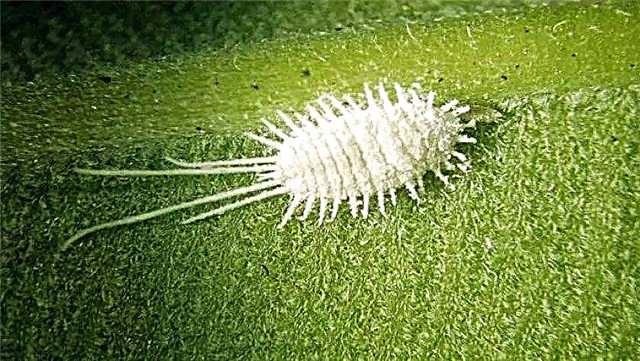
- Shields - leave brown plaques on the foliage and shoots (the method of struggle is the same as in 1 case)

- Aphid - the presence of this parasite can be judged by twisting and drying leaves (treatment with pesticides is required).

 The soil can be purchased at the store or made independently (mix 4 parts of sheet or turf soil, add 1 part of sand, charcoal or brick chips, fibrous peat to each of them).
The soil can be purchased at the store or made independently (mix 4 parts of sheet or turf soil, add 1 part of sand, charcoal or brick chips, fibrous peat to each of them).Did you know? The smallest cactus is considered to be blossomfeldia. The size of the plant does not exceed 1-3 cm.
The acidity of the soil should be 5-6 pH. There should be no lime in the soil, otherwise the flower will wither. It should be noted that in the period after transplantation, the cactus should be watered after 2-3 days and kept in a dark place.
How to propagate epiphyllum
Since vegetative propagation is inherent in a plant, stem cuttings or seeds are used. The second way is more complicated.
Cuttings
To propagate the plant with cuttings, it is necessary to cut off a flat shoot so that the length is 10-15 cm. Its base should be pointed and dried, after which it is placed in a dry container for 2-3 days, then it can already be planted where it will grow constantly. In a pot with prepared drainage and soil, it is necessary to deepen the cuttings to a depth of 1 cm. Water only the next day.
Video: propagation of epiphyllum by cuttings
Seeds
This method of reproduction is not very popular at home, because it is a very time-consuming and inefficient process. However, epiphyllum can also be grown from seeds.
When the plant has already been planted and watered, it is covered with plastic wrap or a cut plastic bottle. The temperature in the room should be + 20 ... + 25 ° С. Do not forget to air the crops daily. The coating should be removed for half an hour or an hour.Important! Material for sowing simple species of epiphyllum can be obtained both from cactus enthusiasts and through botanical gardens.
The first “crop” can be obtained in 4–5 years.
Growing difficulties
Although strong immunity is inherent in epiphyllum, there are several problems associated with the process of growing them.
Remedy:
In addition to these diseases, the plant can be attacked by pests.
Among them:
Omens and superstition
Some people who believe in folk signs are convinced that the epiphyllum is able to protect against uninvited guests, and that the plant absorbs the negative energy of everyone who lives next to it. It is not necessary to present a cactus as a gift - folk signs say that it is to separation.
If this cactus bloomed in the house, then you can expect replenishment in the family, and the lonely ones will find a mate.
Did you know? The largest in size is the giant cereus cactus. Its height ranges from 15-25 m, and the weight reaches 10 tons.
Growing epiphyllum will not give you much trouble if all the rules for caring for the plant, including lighting and temperature standards, are followed. A schedule of watering and transplanting will also contribute to the successful growth and development of the flower.






















